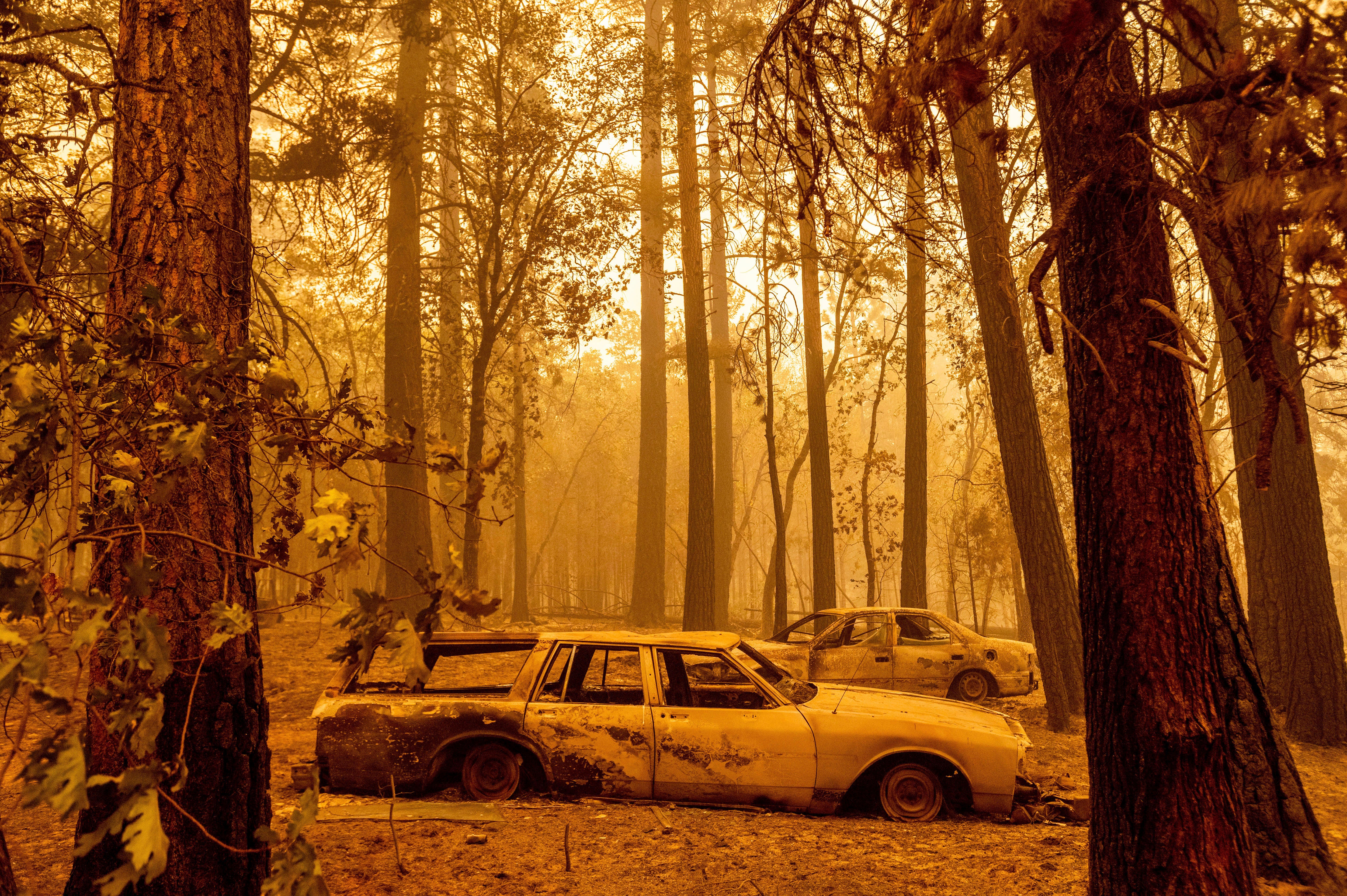California's largest fire burns homes as blazes scorch West
California’s largest wildfire merged with a smaller blaze and destroyed homes in remote areas with limited access for firefighters

Your support helps us to tell the story
From reproductive rights to climate change to Big Tech, The Independent is on the ground when the story is developing. Whether it's investigating the financials of Elon Musk's pro-Trump PAC or producing our latest documentary, 'The A Word', which shines a light on the American women fighting for reproductive rights, we know how important it is to parse out the facts from the messaging.
At such a critical moment in US history, we need reporters on the ground. Your donation allows us to keep sending journalists to speak to both sides of the story.
The Independent is trusted by Americans across the entire political spectrum. And unlike many other quality news outlets, we choose not to lock Americans out of our reporting and analysis with paywalls. We believe quality journalism should be available to everyone, paid for by those who can afford it.
Your support makes all the difference.California’s largest wildfire merged with a smaller blaze and destroyed homes in rugged and remote areas, as numerous other fires burned across the U.S. West.
The Dixie Fire had already leveled over a dozen houses and other structures in Northern California when it combined with the Fly Fire and tore through the tiny community of Indian Falls after dark Saturday.
An updated damage estimate was not available Sunday, though fire officials said the blaze had charred more than 301 square miles (779 square kilometers) of timber and brush in Plumas and Butte counties. It was 21% contained.
The fire prompted evacuation orders in several small mountain communities and along the west shore of Lake Almanor, a popular resort area. More than 10,000 homes were under threat, officials said.
Firefighters also reported progress against the nation’s largest wildfire, the Bootleg Fire in southern Oregon containing 53% of the blaze that had scorched 640 square miles (1,657 square kilometers) of land.
The lightning-caused fire has burned 67 homes, mainly cabins, and at least 2,000 houses were under evacuation orders.
Firefighters have been dealing with perilous fire behavior, with flames consuming huge areas of vegetation each day. Such conditions are often from a combination of unusual random, short-term and natural weather patterns heightened by long-term, human-caused climate change. Global warming has made the West much warmer and drier in the past 30 years.
In southwest Montana officials were focusing on structure protection for three fires amid weather forecasts of rising temperatures, low humidity and westerly winds this week, factors that could produce explosive growth.
Crews were trying to protect about 200 homes and cabins and prevent the 44-square-mile (144-square-kilometer) Trail Creek blaze from reaching the Big Hole National Battlefield in Beaverhead County, fire spokesman Jason Nedlo said. The battlefield site, operated by the National Park Service has been closed because of the fire threat.
Five federal firefighters were in stable condition Sunday after being burned when swirling winds blew a lightning-caused wildfire back on them in eastern Montana on Thursday. The five were building a defensive line at the Devil’s Creek Fire in Garfield County when the weather shifted suddenly.
Elsewhere in California, the 105-square-mile (272-square-kilometer) Tamarack Fire south of Lake Tahoe continued to burn through timber and chaparral and threatened communities on both sides of the California-Nevada state line. The fire, sparked by lightning July 4 in Alpine County, California, has destroyed at least 23 buildings, including more than a dozen in Nevada. It was 45% contained.
In north-central Washington, firefighters battled two blazes in Okanogan County that threatened hundreds of homes and again caused hazardous air quality conditions Saturday. And in northern Idaho east of Spokane, Washington, a small fire near the Silverwood Theme Park prompted evacuations Friday evening at the park and in the surrounding area. The theme park was back open Saturday with the fire half contained.
More than 85 large wildfires were burning around the country, most of them in Western states. They had burned over 1.4 million acres (2,135 square miles, or more than 553,000 hectares).